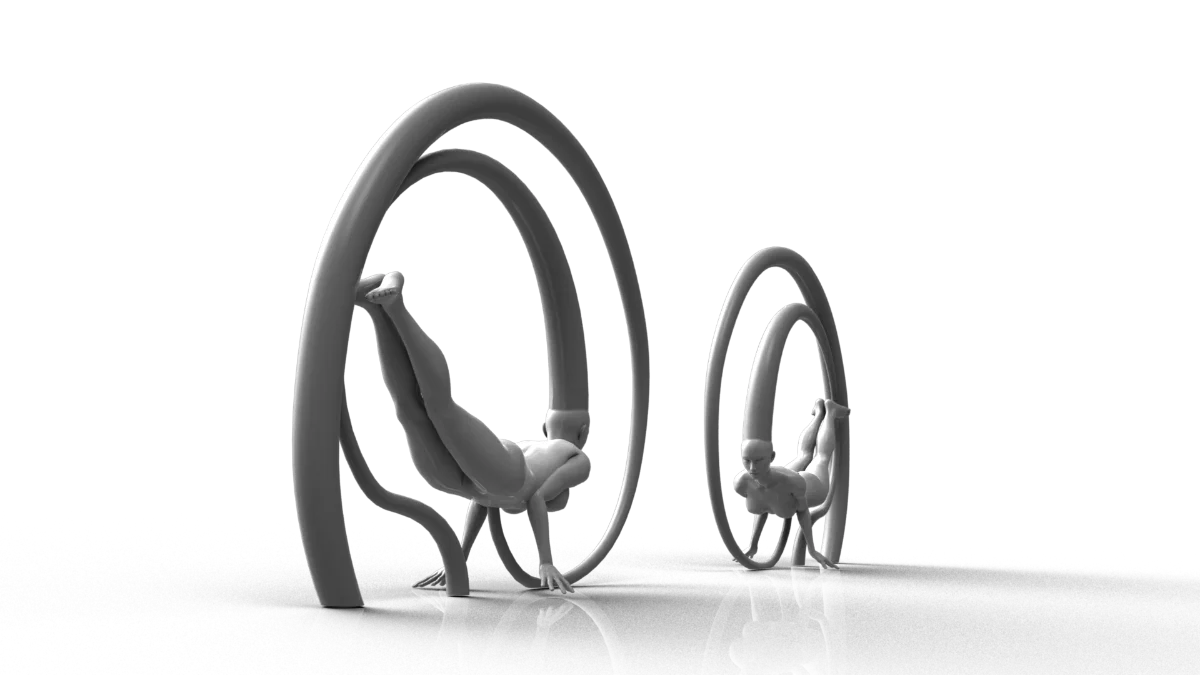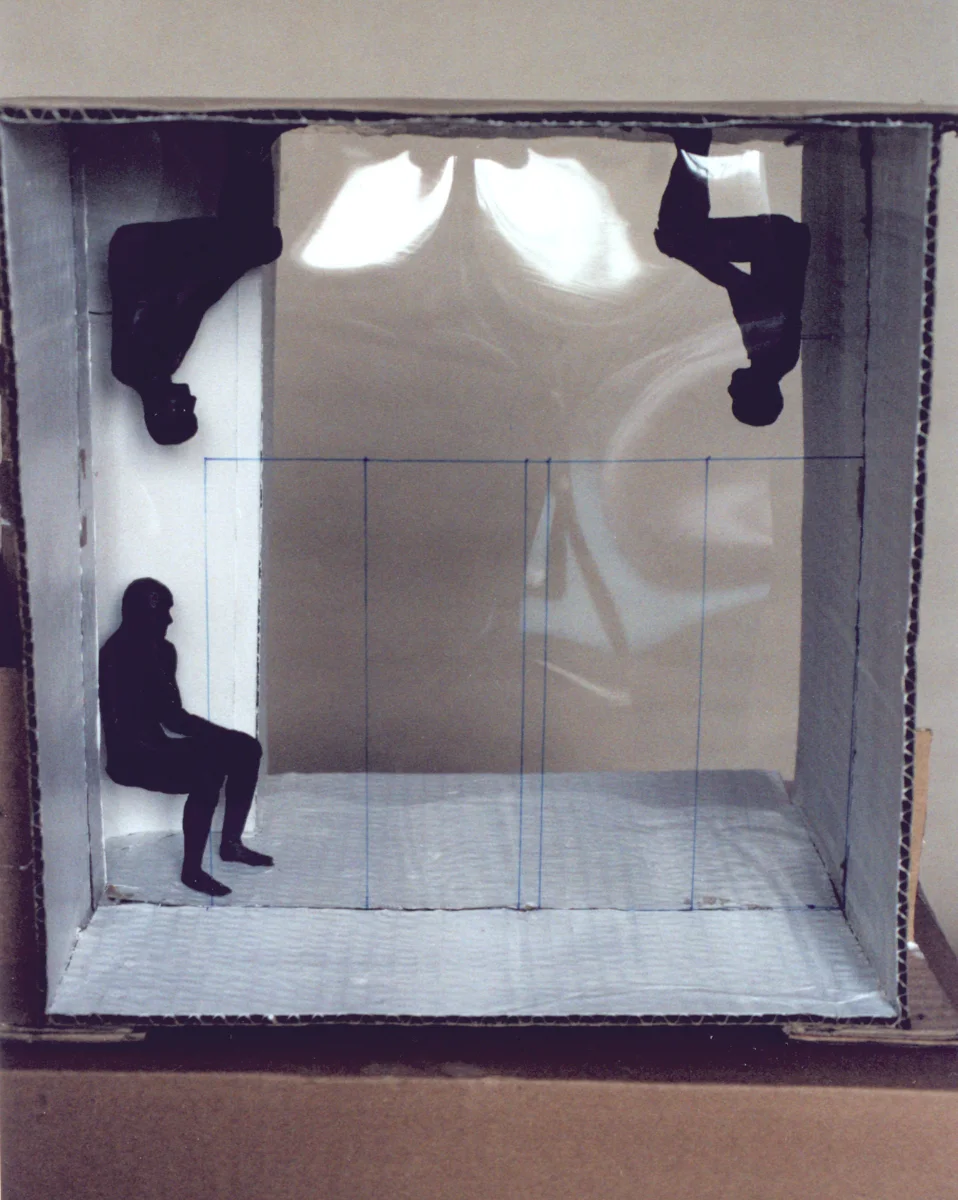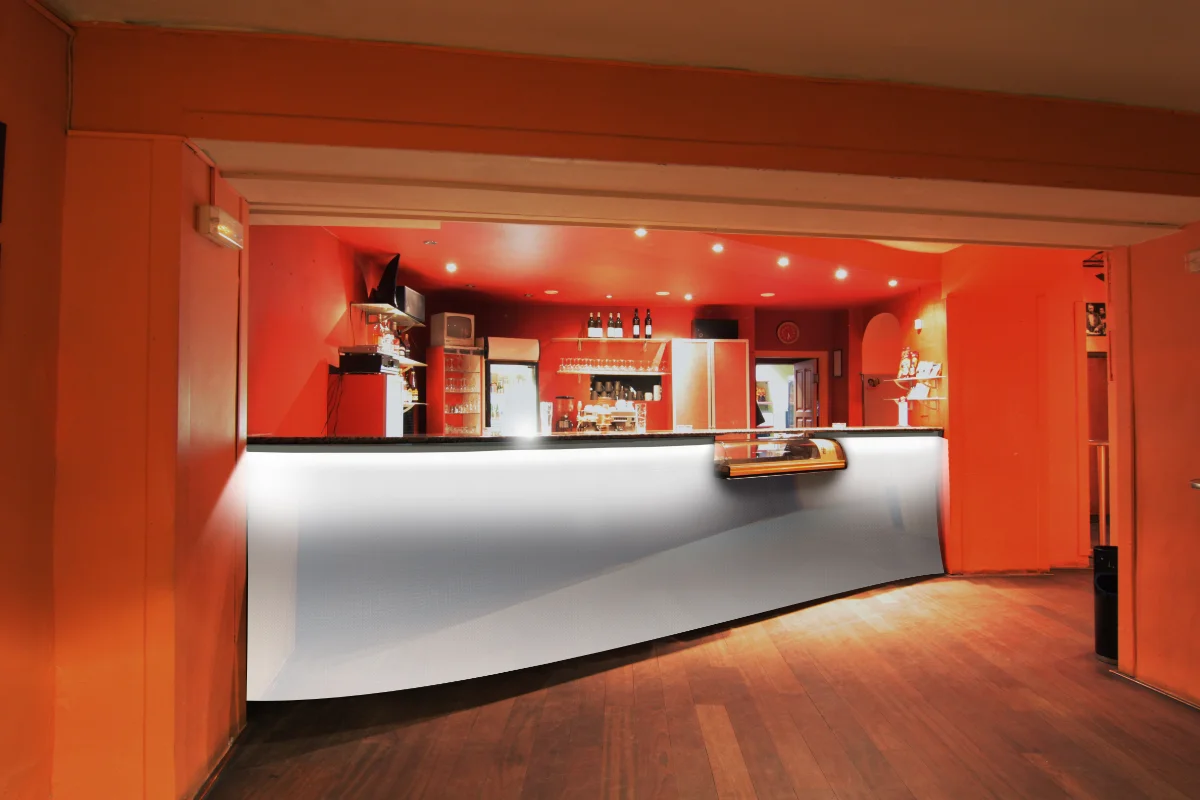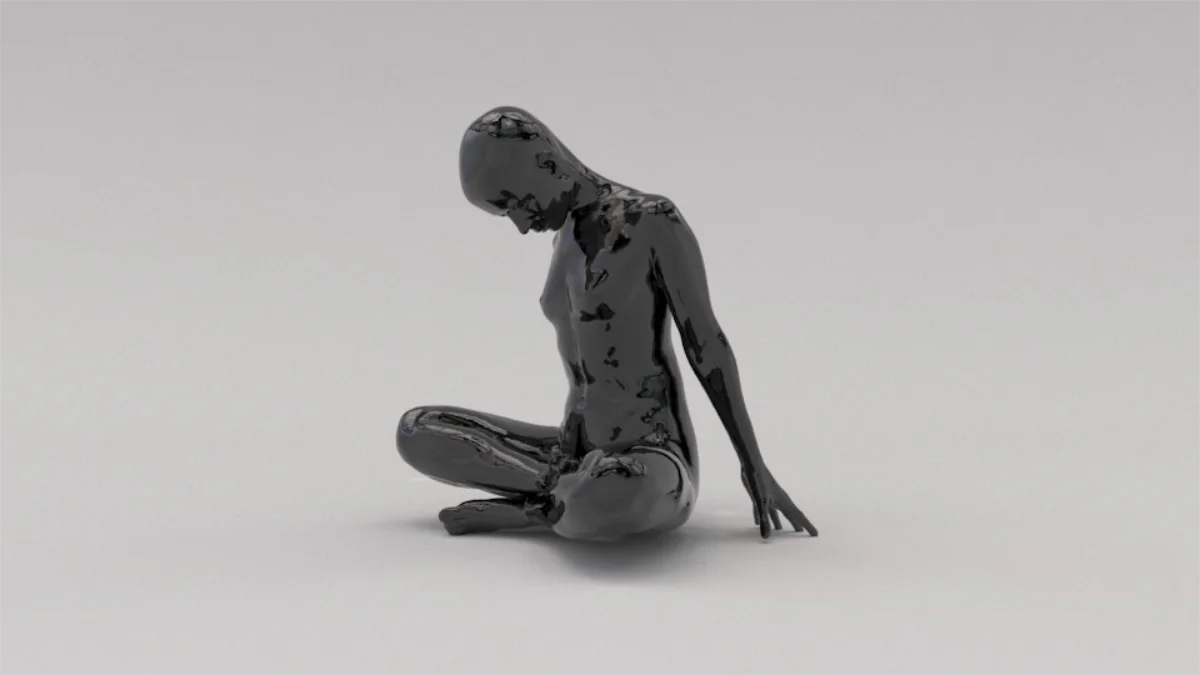Subsequently, two other proposals were created with the theme of “tragi-comedy”.
What
a pair of statues – sculptures – of a tragicomic dialogue, either as part of a stair railing or as a statue in a niche, or in front of the alcove at the entrance in the theater vestibule.
How
plastic casting (polyurethane, epoxy, polyester) fixed into the railing, which is either left original or made completely new in a combination of wood – metal, or wood – metal – polyurethane (acrylate). In the case of placement near a niche – anchoring one statue in the ceiling and the other statue in the floor using studs (anchors).
Why
what-if dialogue is the most typical and perhaps the most basic theatrical expression. Use a similar motif in both cases. In the case of the niche, statues standing, seated on the railing. The gesture of (forcing) a smile draws into the problem the tension between tragedy and comedy. Compared to the classic motif of rising and falling (down to the ground), which is used in the design of the sculptures in the niche, here it is more about the communication of these two elements and a greater degree of irony. A piece of both tragic and comic in each of the two characters. The motif also reflects the tragicomic tone of most plays of this theater. One of the functions of the seated variant of the sculpture would be to cover the dressing room, or rather the hangers with clothes during performances. The sculptures would create a welcome motif for the arriving audience and a quiet companionship for the dressers, ushers and other staff. Although a pair, they would form a complementary but independent whole, and the gestures would be replaced by the beam of light-bearers of earlier theaters. A “disgustingly” flesh-colored artificial plastic would inspire the urge to touch and “touch” the figure’s surface. After all, even cold, stone or bronze statues of saints are often rubbed and smoothed to a yellowed, stubby shape. The sculpture will get its aura through a number of touches, as well as manual sanding.
In 2003, a version of the standing figures was finally realized at the alcove in the theater vestibule.



































